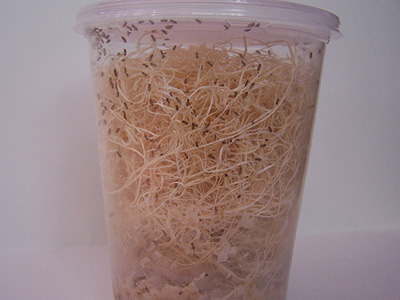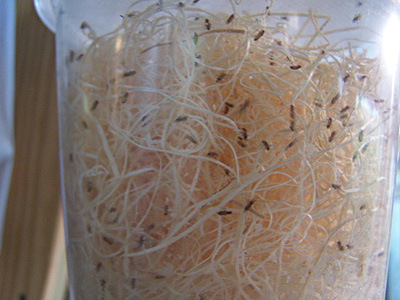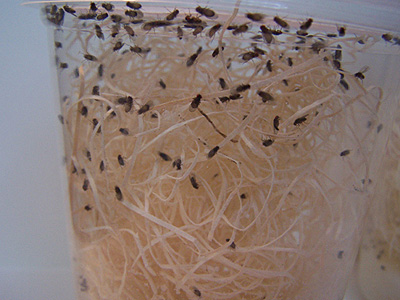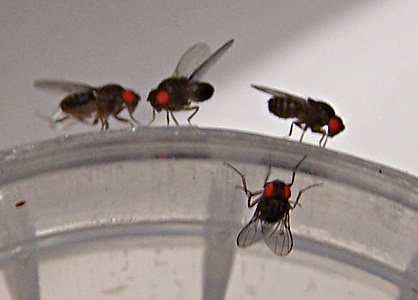|
Fruit Fly Care
Upon arrival
So, the postman just dropped off your package of fruit fly cultures...what now?
When your package arrives, the best thing to do is find a shelf in your house you can put your cultures on where they won't be bothered for a few days. The shelf should be between 73-85F. Fresh cultures take several days before they start producing thousands of flies. You don't want to feed off the flies that initially come in the culture! If you do so, the culture may fail to produce more flies...be patient and wait for a sudden increase in fly production.
After you notice an increase in flies, you may begin to use them; feed them to your pet, make new cultures, etc. If you ordered Already Producing cultures, the time you must wait will be significantly shorter; you can often (but not always) start feeding out flies right away.
Reasons to use fruit flies
Fruit Flies are an excellent feeder insect for many different types of animals for several reasons.
-Fruit fly cultures are very cheap and produce many, many flies.
-Many species of animals readily accept fruit flies as a staple feeder. They can also be used to supplement their diet.
-Fruit flies require very little care and are very easy to breed yourself.
-Fruit flies are do not need to be kept at any hard to achieve temperature; room temp is usually optimal.
-Our fruit flies do not fly, so your escapees will be very minimal.
-Fruit flies can climb smooth surfaces, which will catch the eye of your pet, unlike mealworms and similar insects which just sit there motionless.
-Fruit Flies are very healthy for your pet, ensuring he/she will have a happy, healthy life.
-We can supply fruit flies in wholesale amounts to fill any need.
What feeds on fruit flies?
-Small surface-feeding and mid-water feeding fish including angelfish, bettas, killis and gouramis
-Amphibians including frogs, salamanders and newts
-Reptiles including chameleons, geckos and turtles
-Carnivorous plants including venus fly traps
-Invertebrates including scorpions, Mantids and spiders
-Birds including finches and softbills
D. melanogaster
D. Melanogaster are smaller than D. Hydei just reaching 1/16" fully grown. These brown flies, while smaller when compared with D. Hydei reproduce much quicker; maggots form about 4 days after freshly made and flies begin to hatch about 8-14 days (10 days being average) from arrival. Our D. Melanogaster are wingless (and obviously flightless), but can climb smooth surfaces. These flies are easy to raise and culture; see our DIY Culturing Page for details.
Feed D. melanogaster fruit flies to...
-Small surface-feeding fish
-Mid-water feeding fish
-Frogs, salamanders and newts
-Insect-eating reptiles
-Insect-eating plants
-Many species of invertebrates including mantids and scorpions
 
D. Hydei
Drosophila Hydei have a much longer (roughly double) life cycle than D. Melanogaster, and are also very prolific. Within about 8 days of freshly made D. Hydei cultures, maggots will start appearing; flies will appear in a total of 13-20 days (15 days being average). D. Hydei are also twice as large as D. Melanogaster reaching a size of 1/8" fully grown. Our D. Hydei do have wings, but are not able to use them (flightless); however they can climb smooth surfaces. This species is just as easy to culture as D. Melanogaster; see our DIY Culturing Page for details.
Feed D. Hydei to...
-Turtles
-Amphibians including frogs, newts and salamanders
-Reptiles including chameleons and geckos
-Small birds including finches and softbills
 
|